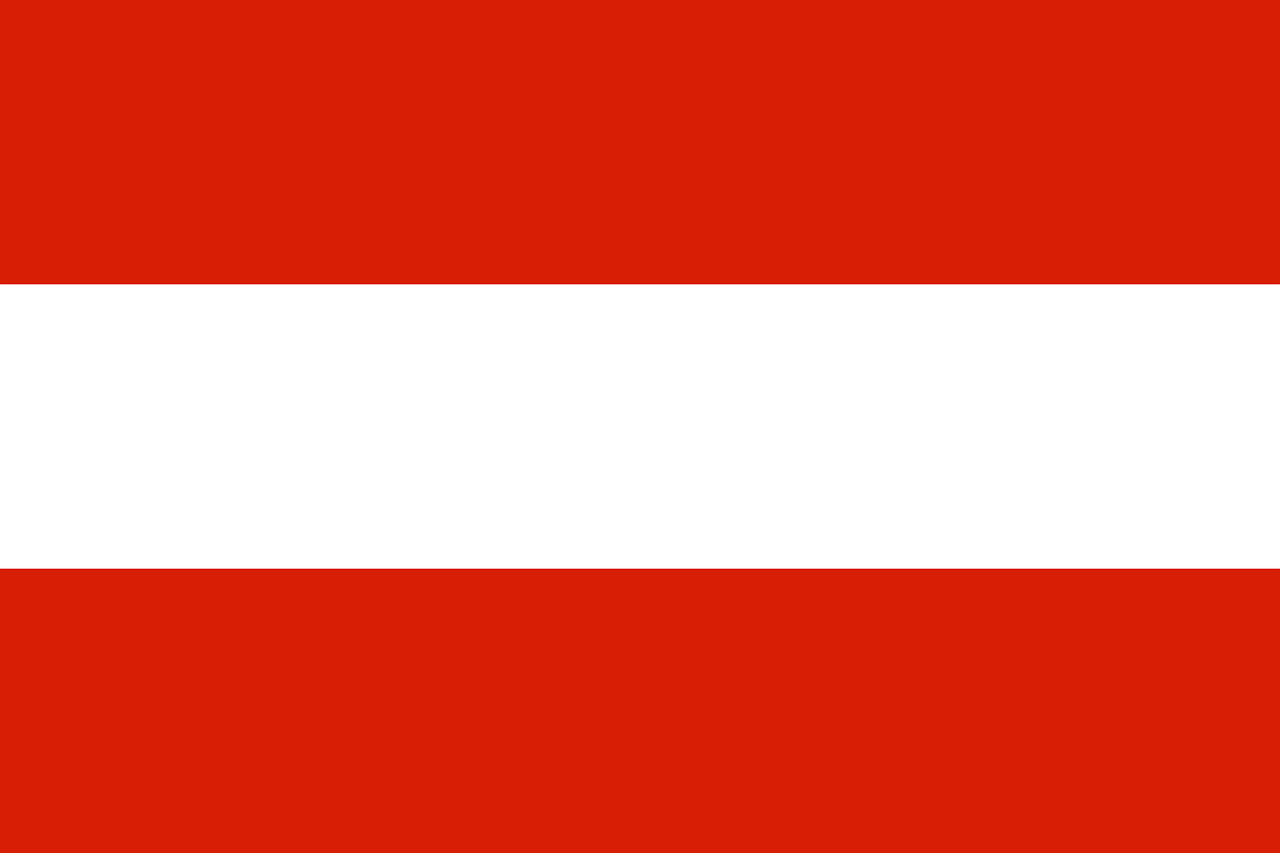Flags serve as powerful symbols that represent the essence and values of a nation, and the national flag of Austria, with its striking combination of red and white, is a reflection of the country’s rich history and national identity. In this blog post, we will delve into the captivating story behind the Austrian national flag, tracing its origins, symbolism, historical significance, and its enduring importance in contemporary Austria.
Origins and Evolution:
The Austrian national flag, known as the “Rot-Weiß-Rot” (Red-White-Red), features three horizontal stripes of equal width, with the top and bottom stripes being red and the middle stripe being white. The flag’s design can be traced back to the Middle Ages when it was adopted by the Babenberg dynasty, one of Austria’s early ruling families. Over the centuries, the flag’s design underwent minor modifications before settling into its current form.
Symbolism and Meaning:
The colors of the Austrian national flag hold symbolic significance. The red color represents bravery, strength, and the noble heritage of Austria. The white color symbolizes purity, peace, and the strong Christian traditions that have influenced the country’s history and culture. The flag’s simplicity and boldness reflect Austria’s commitment to clarity, order, and stability.
Historical Significance:
The Austrian national flag carries historical significance, representing the nation’s rich heritage and struggles. Throughout history, the flag has been associated with various ruling dynasties and empires that have shaped Austria’s destiny. It has witnessed pivotal moments, including the rise and fall of the Habsburg dynasty, the Austro-Hungarian Empire, and the tumultuous events of the 20th century, which led to the establishment of the Republic of Austria.
Contemporary Importance and National Identity:
In present-day Austria, the national flag holds great importance, serving as a symbol of national unity, pride, and cultural identity. The flag is proudly displayed during national holidays, such as National Day on October 26th, and other significant events, including sports competitions and official ceremonies. The flag represents the shared values, history, and achievements of the Austrian people, fostering a sense of belonging and solidarity.
The Austrian national flag plays a crucial role in shaping the national identity of Austria. It represents the country’s commitment to democracy, freedom, and the rule of law. The flag symbolizes the diversity and rich cultural tapestry of Austria, as well as the unity and cooperation among its regions and communities.
International Recognition and Influence:
The Austrian national flag is recognized internationally, representing Austria’s presence on the global stage. It is proudly displayed at Austrian embassies, consulates, and international events, symbolizing the country’s diplomatic relations and its contributions to international cooperation. The flag’s simple yet distinctive design has also influenced various fields, including art, design, and fashion, making it an iconic symbol of Austrian identity and style.
The Austrian national flag, with its elegant red and white design, embodies the nation’s history, cultural heritage, and collective aspirations. It symbolizes Austria’s bravery, peace, and unity while reflecting the country’s rich historical legacy. The flag fosters a sense of national identity, pride, and belonging among the Austrian people, transcending regional differences and promoting a shared sense of purpose. As Austria continues to evolve, the national flag will remain an enduring emblem, representing the country’s unique heritage, values, and its place in the global community.






